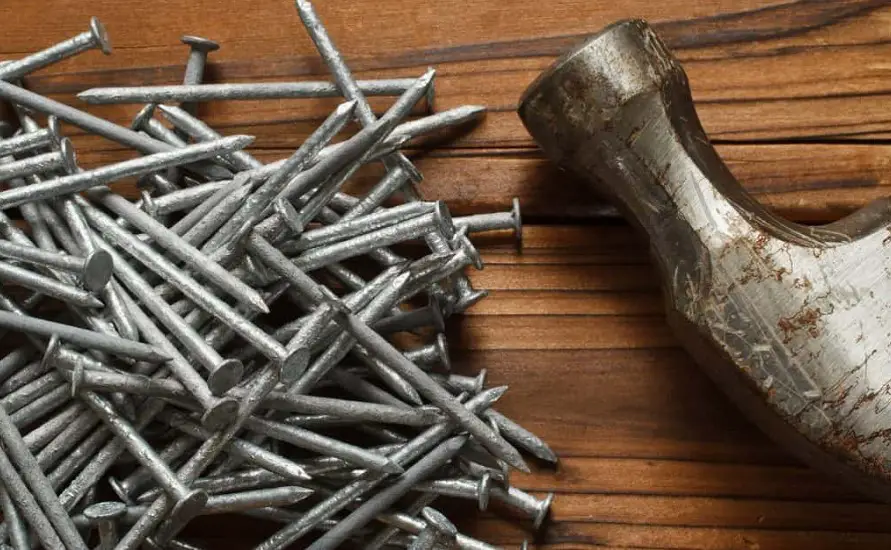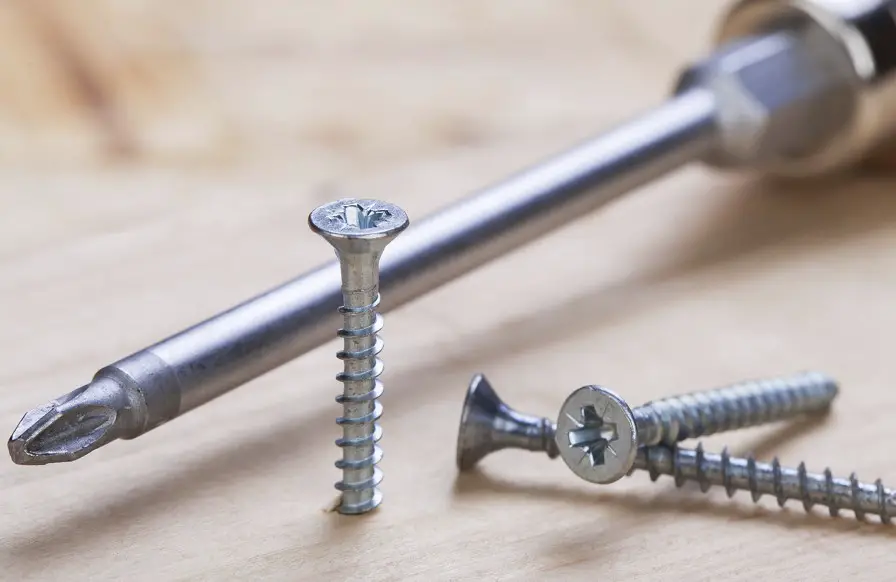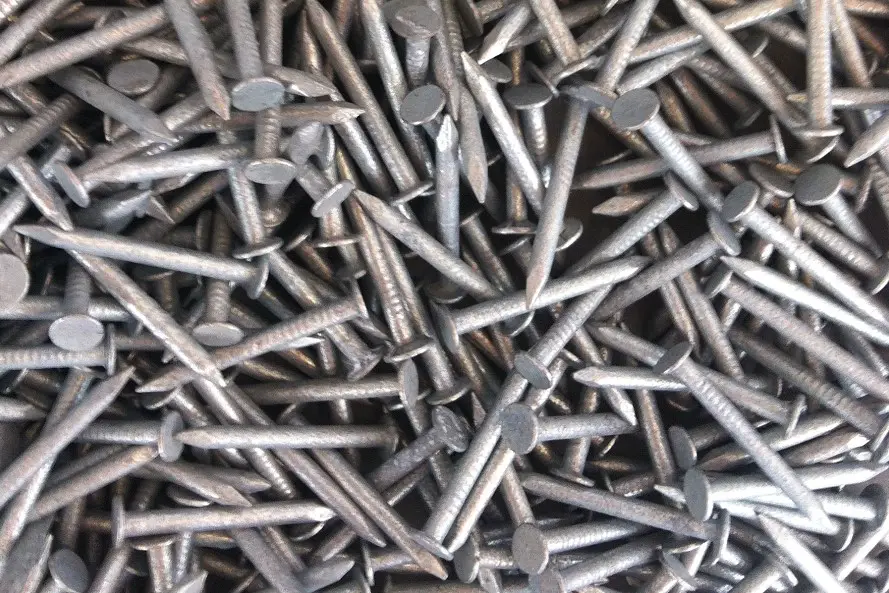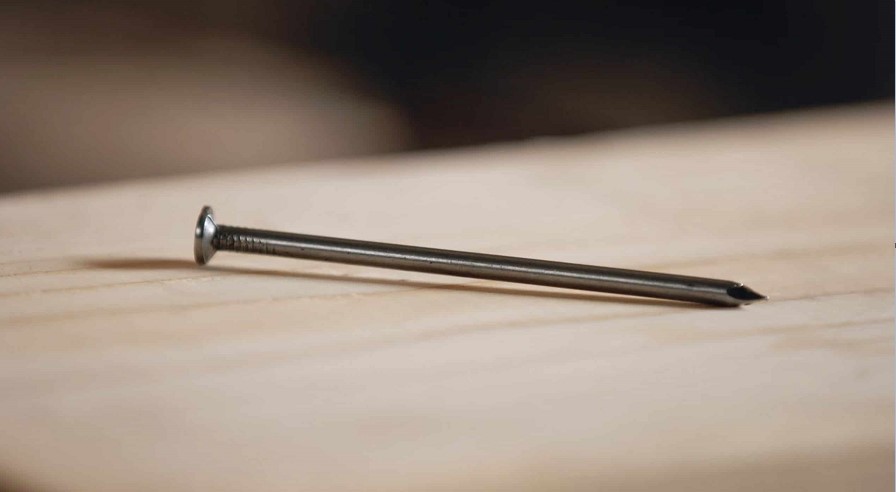Framing nails size: what size should you choose?
Before using any nail frame, you must initially determine the size of nails you’ll need for framing. Using incorrect size nails for framing could ruin your work. After reading this article, you’ll have a solid knowledge of frame nail sizes and what size and head diameter you should use for the framing project.
Everyone dreams of building their own home. Both interior walls and exterior framing are components of the planning involved in building a lovely home.

A nail gun is the greatest tool available in a hardware store. In addition, small and large nails with different head diameters and a few other attachment tools, are needed for the framing procedure.
Without the assistance of experts, there is a chance to buy the wrong framing nails from a hardware store, and choosing the right framing nail size can be significant. We gather pertinent data to help contractors select the right framing nails before starting the job.
How do the several nail sizes work for framing?
You have to purchase a suitable nail size and a professional head diameter for framing. Picking framing nails that are way longer than the surface you are working on is excellent.
This improves the framing nails’ skill to firmly attach to surfaces that are thicker than the nail.
Vinyl or epoxy coating allows driving into the framing easier than the common variety.
Galvanized, vinyl, or epoxy-coating frame nails must be used for outside construction to withstand the factors that could lead to rusting.
However, common framing nails are a viable alternative for wall framing project nails, they work better indoors.
Although markings indicate their sizes, it can be important to identify between the various nail varieties. From its color and texture, buyers may quickly identify which sort of nail is common or sinker.
While purchasing nails, you should also think about whether they will function with your nail gun.
In a nail gun, nails are often arranged in rows to facilitate nail insertion. While purchasing, be sure to check the brands because most nails can only be used with nail guns of a similar Label.
How to choose the best nail size for your demands
There are several nail sizes available in the building sector with various head diameters that you can use for framing. They vary in both length and thickness for the sole aim of long-term framing stability.
Purchasing the right size nails with the right head diameter helps the whole construction operation and reduces unnecessary costs.
A manual for choosing the appropriate nail size is available for your requirements. To start with, nail length is significant when framing.

image credit: canva.com
Nail length and diameter
While selecting which to purchase, the nail length should be taken into account. You can select from a wide range of nail lengths based on your frame requirements.
To name a few, the typical nail lengths for framing are 6,8,10, and 16d. Your needs could be met by additional dozens of nail sizes. It differs from shorter box nails.
The nail’s diameter and length are proportional. Small head diameters cannot be used for framing jobs.
Nail materials
Several materials that might meet any purpose are used to make nails.
The best nail work you are doing should be identified before you start looking for the appropriate supplies.
Steel is the most popular material for nails, but it corrodes easily when exposed to dampness. Knowledge of nail materials can affect how good your framing will turn out.
Nail finishes
Nails must be coated to stop the corrosion process. For interior applications, uncovered nails are ideal since they are typically lighter than covered steel. Black phosphate covering, sometimes known as drywall nails, is effective for the indoor program as well.
There are corrosion-resistant nails, that are zinc-plated, so don’t worry. These are suitable for indoors as well. Finally, galvanized nails are ideal for outdoor applications due to the thick zinc coating.
The most effective sort of nail finish is vinyl covering.

image credit: canva.com
Specific purposes
First, begin by selecting the best nails for particular needs. Contractors must learn and understand where and how to use the nails before purchasing.
Nail gun
A good nail gun for your task must be taken into account while selecting the appropriate sizes. Every nail gun model comes with a manual that describes the types for which it may be used.
Be mindful before purchasing nails that certain guns only take one nail from one side. To prevent certain issues, developers advise using the same title for nail guns and nails.
Other nail types for framing
As was previously noted, the size of framing nails varies based on their intended function. You don’t need anything bigger than the 16 and 10d sizes. Varieties of nails will be helpful for the framing requirements. That contains:
Box nails
Lumber and other thinner wood products are ideal for box nails. This nail type has limited ability than common nails.
Its tiny size provides the benefit of causing fewer splits in the wood. Box nails are slightly thinner and range in length from 1 to 3 inches.
Common nails
This nail is used for ordinary construction tasks, including framing. Since most constructors utilize it in a larger application, it is a common nail.
They are ideal for 2x dimensional lumber because of their large heads and diamond-shaped tips. Due to its thicker look compared to the other, it might split wood.
Carpenters will slightly flatten the nail tip as a fix so that part of the wood won’t split. Also, the superior attaching quality makes it ideal for woodworking applications
Duplex nails
A nail with two heads is called a duplex. It pertains to short-term framing projects when the nails are taken out.
These nails are simple to take out of wood without damaging the wood’s surface. Scaffolding and staging are two further use for duplex nails.
Sinker nails
This particular variety of common nails is a bit shorter and has a thinner diameter.
Moreover, a sinker nail frequently has a vinyl that makes it much simpler to drive them into the framing than the standard version.
Although besides vinyl or epoxy-coated nail varieties, it does not assure rusting strength. The sinker nail’s checkered head, which prevents the hammer from cutting the nail head, is another distinctive feature.
Connector nails
Sometimes it’s challenging to frame angles, but using connector nails for framing makes the task much simpler. It is made to fasten hardware for structures that contains frame angles.
The nail is substantial and sturdy and adequate to maintain an angle. For rafter ties, connector nails also function.

image credit: canva.com
What size nails for framing are the best?
The ideal size of framing nails purely depends on the tool’s intended use. Unlike those larger sizes, framing is not strongly advised for 2d to 5d range nail sizes.
To avoid splitting problems, try to use a size that won’t go all the way through the wood.
16d nail size
Provides the optimal shank length.
Common nails’ 2×4 lumber is used in most framing work for joining flat woods. Common and box nails both have a length of 3.5 inches for the normal 16d nail. Common 16d nails are made from thicker 8-gauge wire, whereas 16d box ones are made from thinner 10-gauge wire.
The only other variation is the wire gauge. Using 16d frame nails offers a sturdy construction that complies with regional building requirements, regardless of your decision.
Better for 2×6 lumber is a 4-inch, 20d nail, but it may split smaller 2×4 boards. If you use a 3-inch, 10-diameter nail for framing 2×4s, your structure won’t have enough strength.
10d nail size
10d nails diameter is smaller than 0.150 inches, and their length is 3 inches. These galvanized nails are frequently used in truss-building projects.
The 10d nails should be driven into the wood with a minimum of 5 times the diameter of the nail. This results in improved nail placement, increasing durability.
Besides that, where two boards are placed level against one another to double like a wall stud, 10d nails perform admirably.
With these nails, joining the boards is feasible. Better than 16d nails, the nail won’t be able to get through the fused boards.
8d nail size
The 8d nail sizing is roughly 2.5 inches longer than the previous nails, but they are also a little thinner. Compared to conventional, vinyl-coated nails, the 8d nails are with a smaller sink.
This nail size is suitable for framing activities as subflooring, or if you need to attach furring strips, it doesn’t require huge nails either. The 8d nail size is an option to prevent puncturing boards, where nails smaller are more appropriate for the task.
6d nail size
The 6d nail size is one of the standard sizes. They are 2.25 inches in length and 0.12 inches in diameter.
Due to their smaller diameter than the other nails, these are not frequently utilized for framing. As they are nailed into the wood, their advantage is less damage.
There are two varieties of it: ordinary nails and box nails. A finished floor and a subfloor are fastened using the 6d.
Once a nail is in a piece of wood, they decrease the chance of breaking it into pieces. Smaller nails are ideal for modest interior projects like putting flat pieces of wood together.
Some tips for choosing the ideal nail size for framing
Common nails are stronger
The best nails for framing are common nails. A common nail has a thicker shank, a wide nailing head, and a sharp point. Therefore, you have fewer chances to get bent nails.
A 16d common nail has a smooth head that is 0.162 inches wide and 3.5 inches long, allowing for full hammer-to-nail contact. The nails are strong enough to hold the frame with each other because of their large shank. With each strike, the sharp point ensures that the nail enters the wood without tearing its fibers or possibly splitting it.
Builders prefer sinker nails
Sinkers’ smoother, patterned heads stop the hammer from slipping on glancing blows. To assist seal the nails and keep them from backing out, they also feature an epoxy covering.
The best 16d nails for framing, in the opinion of some builders, are sinkers. Builders appreciate it more because of the textured head.
The conventional sinker 16d nail’s textured head makes it less likely that the hammer will slide off the surface of the head.
The sinker edge stands out from the usual framing thanks to its coating. Places with extreme humidity are prone to corrosion. The epoxy finish protects the nail by covering it.

image credit: canva.com
FAQ
The majority of building professionals believe that you should use 16d nails, usually known as 16-penny nails. They measure the ideal 3.5 inches in length.
16d (3.5 inches) nails are the best nail size for nailing 2×4s.
16d nails (16-penny) are 3.5 inches long, while 12d nails are 3.25 inches long.
16d nails are made of thicker 8 gauge wire, while 12d are thinner, and they can’t support a heavy structural load.
Short or thin nails are ineffective, whereas those that are overly long or fat might fracture wood and are difficult to drive. A 2.5-inch gun will only provide a half-inch of bite; it is best to get a 3 or 3.5-inch pistol.
Conclusion
Different projects need different framing nails, that’s why it is crucial to know the size of nails for framing for you to succeed and for facing no problems with it.
This article contains all the information that you need to check about various sizes of various nails for framing jobs that will help you in choosing the proper nail size for your framing process.


